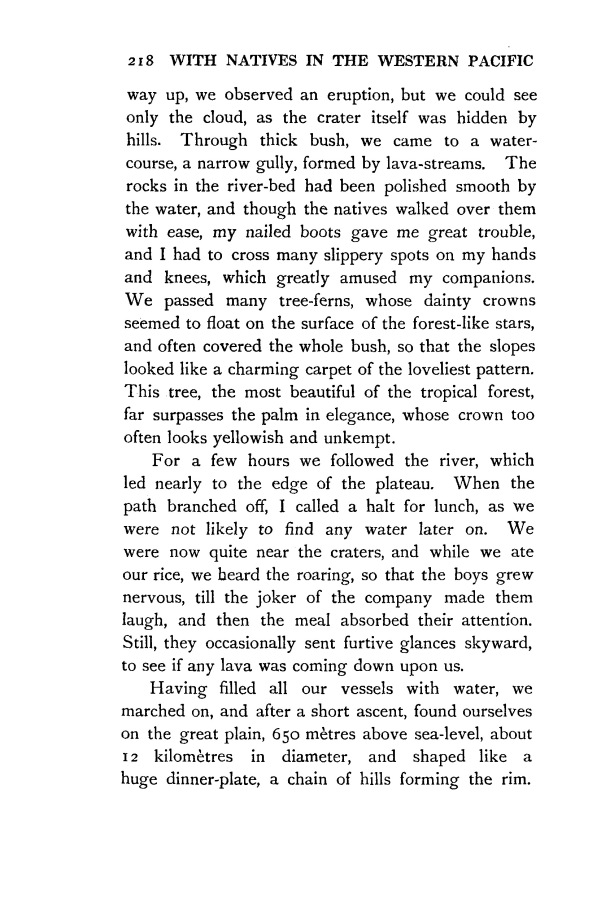|
|  [Note: this transcription was produced by an automatic OCR engine]
218 WITH NATIVES IN THE WESTERN PACIFIC
way up, we observed an eruption, but we could see
only the cloud, as the crater itself was hidden by
hills. Through thick bush, we came to a water—
course, a narrow gully, formed by lava-streams. The
rocks in the river-bed had been polished smooth by
the water, and though the natives walked over them
with ease, my nailed boots gave me great trouble,
and I had to cross many slippery spots on my hands
and knees, which greatly amused my companions.
We passed many tree—ferns, whose dainty crowns
seemed to float on the surface of the forest-like stars,
and often covered the whole bush, so that the slopes
looked like a charming carpet of the loveliest pattern.
This tree, the most beautiful of the tropical forest,
far surpasses the palm in elegance, whose crown too
often looks yellowish and unkempt.
For a few hours we followed the river, which
led nearly to the edge of the plateau. When the
path branched off, I called a halt for lunch, as we
were not likely to find any water later on. We
were now quite near the craters, and while we ate
our rice, we heard the roaring, so that the boys grew
nervous, till the joker of the company made them
laugh, and then the meal absorbed their attention.
Still, they occasionally sent furtive glances Skyward,
to see if any lava was coming down upon us.
Having filled all our vessels with water, we
marched on, and after a short ascent, found ourselves
on the great plain, 6 50 metres above sea-level, about
12 kilometres in diameter, and shaped like a
huge dinner-plate, a chain of hills forming the rim.
|